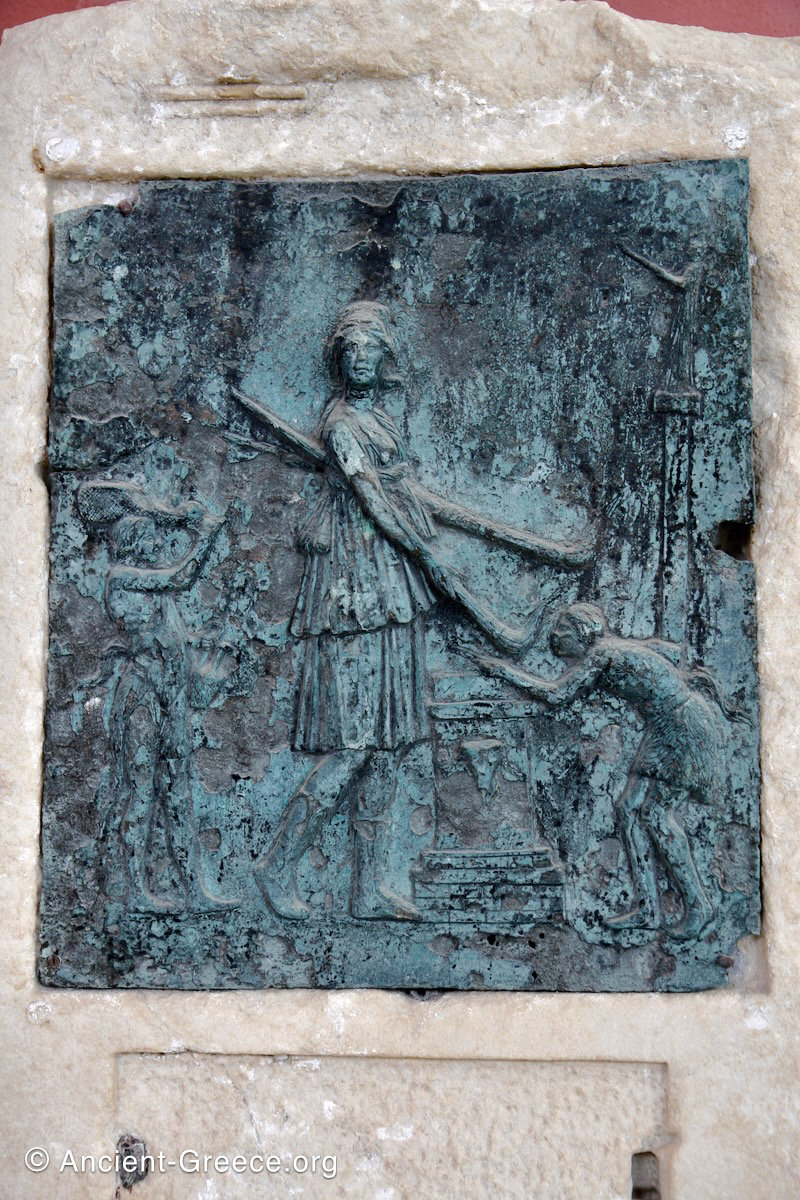
On this page:
Tyche personified that peculiar combination of circumstances which we call luck or fortune, and was considered to be the source of all unexpected events in human life, whether good or evil.
If a person succeeded in all he undertook without possessing any special merit of his own, Tyche was supposed to have smiled on his birth. If, on the other hand, undeserved ill-luck followed him through life, and all his efforts resulted in failure, it was ascribed to her adverse influence.
Representations
This goddess of Fortune is variously represented. Sometimes she is depicted bearing in her hand two rudders, with one of which she steers the bark of the fortunate, and with the other that of the unfortunate among mortals. In later times she appears blindfolded, and stands on a ball or wheel, indicative of the fickleness and ever-revolving changes of fortune.
She frequently bears the sceptre and cornucopia or horn of plenty, and is usually winged. In her temple at Thebes, she is represented holding the infant Plutus in her arms, to symbolize her power over riches and prosperity.
Tyche was worshipped in various parts of Greece, but more particularly by the Athenians, who believed in her special predilection for their city.
Fortuna
Tyche was worshipped in Rome under the name of Fortuna, and held a position of much greater importance among the Romans than the Greeks. In later times Fortuna is never represented either winged or standing on a ball; she merely bears the cornucopia. It is evident, therefore, that she had come to be regarded as the goddess of good luck only, who brings blessings to man, and not, as with the Greeks, as the personification of the fluctuations of fortune. In addition to Fortuna, the Romans worshipped Felicitas as the giver of positive good fortune.
Ananke (Necessitas)
As Ananke, Tyche assumes quite another character, and becomes the embodiment of those immutable laws of nature, by which certain causes produce certain inevitable results.
In a statue of this divinity at Athens she was represented with hands of bronze, and surrounded with nails and hammers. The hands of bronze probably indicated the irresistible power of the inevitable, and the hammer and
chains the fetters which she forged for man.
Ananke was worshipped in Rome under the name of Necessitas.
From: Berens, E.M. The Myths and Legends of Ancient Greece and Rome. New York: Maynard, Merril, & Co., 1880. Text in the public domain.



